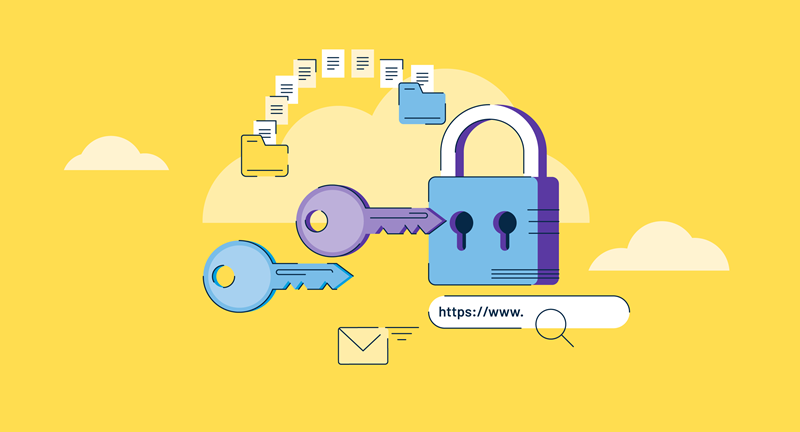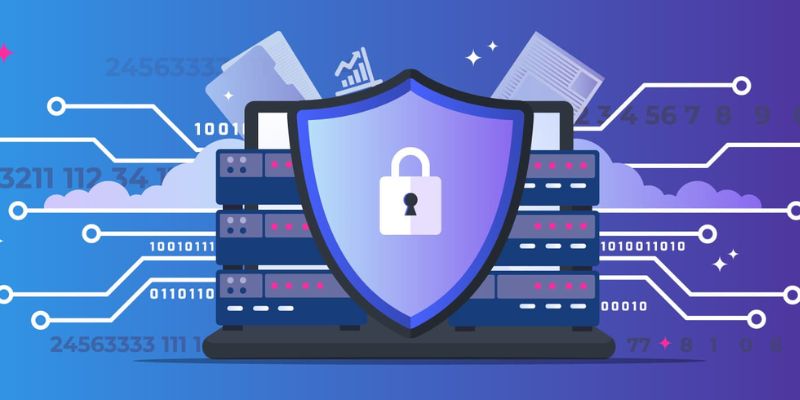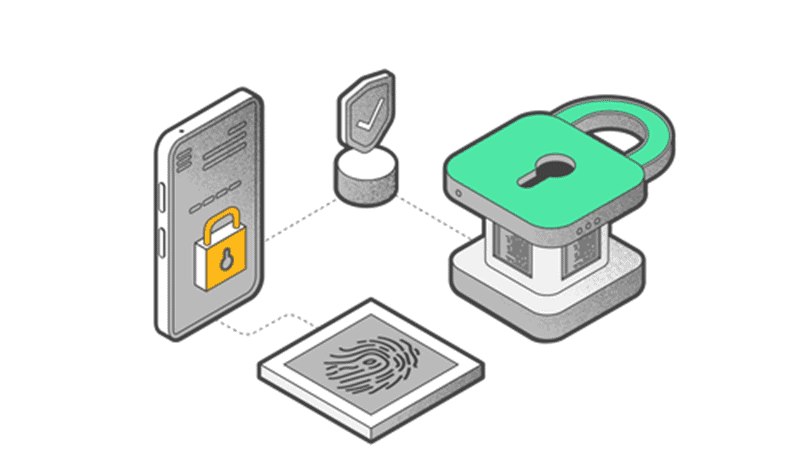In the ever-evolving tech landscape, examples of secure blockchain implementations are not just buzzwords; they’re critical milestones in an industry pushing the bounds of safety and efficiency. Diving into these breakthroughs gives us a glimpse into a world where banking means more than just safeguarding money, and healthcare transcends the four walls of a hospital. We’re not just scratching the surface; we’re building a foundation. As we unravel how cryptography and consensus models build impenetrable fortresses around digital assets, we realize it’s not all about what’s now — it’s about what’s next. From Internet of Things (IoT) edges to the integrity of our voting systems, follow me on a journey through the blockchain brilliance that’s redefining trust, one block at a time.
Secure Blockchain Applications Across Industries
Banking Sector Blockchain Innovations
In the banking world, blockchain is making waves. Banks use blockchain to keep your money safe. It changes how we see and use money. They have a system called distributed ledger technology. Think of it as a book that many people can write in at once. Only if everyone checks and agrees, can you write in this book. This means no fake records can sneak in.
Banks do not want someone spending money twice. Blockchain helps stop this with something we call ledger tamper resistance. It makes sure every money move is unique and can’t be copied.
Blockchain keeps a sharp eye on every penny. This is thanks to its secure digital identity on blockchain. Your ID is locked tight using complex codes. These codes are like a secret handshake only you and the bank know.
Cryptographic hashing in blockchain is another superhero. It scrambles data. So, even if bad guys get in, they can’t understand or change your info.
Banks love proof of work security. This makes people solve hard puzzles to add to the ledger. It takes time and effort. So it is hard for tricksters to mess with it.
Blockchain in Healthcare for Enhanced Security
Now, let’s dash over to healthcare. Hospitals hold our most private info. They use blockchain to keep our secrets safe. Blockchain puts up walls so strong, nothing bad can sneak through.
Blockchain in healthcare records each patient’s details in code. Think of it like a lockbox for health data.
Smart contracts safety in healthcare matters a lot. These are promises in code that auto-run when conditions are met. They make sure treatments and payments go hand in hand. Plus, they check to see things go just as they should.
With robust smart contract implementation, patients and doctors can relax. They know contracts will do their job well. No mistakes, no cheats.
All this tech talk means we can trust our doctors more. And not worry about our info getting lost or stolen. Blockchain for data encryption is just like a superhero. Saving the day, keeping your health details away from the bad guys.
In both banks and hospitals, blockchain is a hero. It keeps our stuff safe without us seeing it work. That’s the beauty of this mighty tech. It works day and night so we can sleep tight.
Tools like blockchain security audits make sure the system is tough. They are like doctors giving blockchain a check-up. They find any weak spots and fix them up sharp.
All these examples show just how cool and useful blockchain is. It’s not just for tech wizards. It’s for everyone who wants to keep their stuff safe. Blockchain is not a fad; it’s the future. And it’s here making a big difference. Each step forward makes our world safer. With blockchain, we hold the key to a secure tomorrow.
The Technology Behind Blockchain Security
Cryptographic Hashing and Blockchain Integrity
Cryptographic hashing keeps blockchain tech safe. It turns data into a unique string of characters. No two data sets have the same hash. This secures info and stops tampering.
Imagine sending a secret message. You lock it in a box that only the right key opens. That’s hashing. Every block in a chain has its own hash. It links to the last block, making a secure chain.
Changing any block alters its hash. So, the next block’s link breaks. This alerts the network to possible fraud. Hashes keep our financial details safe when using blockchain.
Blockchain systems using hashing include Bitcoin and Ethereum. They protect millions in assets daily.
Consensus Algorithms: Proof of Work vs. Proof of Stake
Consensus algorithms are rules that keep blockchain networks safe and fair.
Proof of Work requires solving complex puzzles, or mining. It secures networks like Bitcoin. But it uses a lot of power, which is a drawback.
Proof of Stake is different. It picks validators based on the coins they hold. They ‘stake’ them as a pledge to follow the rules. It’s more eco-friendly than Proof of Work.

Avoiding double spending is vital. Here comes consensus algorithms. They confirm each transaction is unique and real. This prevents the same coin from being spent twice.
These methods both make sure all players agree on the transaction records. That’s key for blockchain security.
Blockchain makes things safer in many fields, from making sure our votes count to keeping health records secure. It’s amazing to see how just a few techs can make our digital world so strong. We’re moving towards a future where our transactions are more protected than ever before, and I’m here for it!
Enhancing Trust Through Blockchain Security Measures
Conducting Comprehensive Blockchain Security Audits
Let’s dig into how we keep blockchains safe. Imagine your blockchain is a fortress. To make sure it’s safe, you need experts to check every corner for weak spots. That’s what a blockchain security audit is all about. We look for weak links that could let hackers in. This means checking the code and how the blockchain works as a whole.
Think about your house and all the ways someone could break in. Now, imagine you’ve got experts going through and making sure every window, door, and wall is secure. That’s what we do with blockchains. By finding and fixing these, we make the whole system safer.
We see how each part of the blockchain interacts. This can include how money moves or how information is stored. We look for errors or signs that someone could change the data. If we find them, we take steps to block these holes.
Implementing Robust Smart Contracts to Avoid Vulnerabilities
Now, smart contracts are like deals set in digital stone. They run when certain conditions are met. But these contracts need to be tough, so no one can mess with them. We write and test these contracts to handle all sorts of situations. This makes sure they work right and only do what they’re meant to.
We focus on making these contracts not only smart but also strong. They should be able to resist hackers and keep our deals safe. This means writing clear rules and double-checking them. We also use tools to test these contracts, just like you’d test a bike helmet. We want to be sure they protect us as they should.
You may ask, why is all this so important? A tiny hole in a smart contract could let someone steal or change important details. That could ruin the trust we have in the blockchain and lead to big problems.
In conclusion, we make blockchains trusted by being very careful. We check and double-check every piece. With every audit, with every smart contract we build, we’re making sure your blockchain fortress stands strong. And we do it all to keep your trust in this amazing tech.
Future-Proof Blockchain Implementations
Blockchain Integration in IoT for Secure Data Management
We are stepping into a world where IoT meets blockchain. IoT devices are everywhere now. They’re in our homes, factories, and even in the fields tracking crops. But, they collect heaps of data. And we need that data to be safe. That’s where blockchain comes in.
Blockchain keeps IoT data locked tight. How? It breaks data into chunks and seals it with strong codes called cryptographic hashing. This means only folks who should see your data can. It keeps hackers out.
Companies are catching on. They use blockchain to stop data from getting changed or lost. So, your smart fridge can keep ordering milk without any mix-ups or someone knowing what you eat.
A case showing secure IoT and blockchain is when they work on supply chains. Products get tags, and each step is recorded on a blockchain. This lets us see a product’s journey from start to end. It’s safer and clearer for everyone.
Innovations in Blockchain for Secure Voting Systems
Now let’s talk about voting. Voting is a big deal. We need to trust the results. Old ways of voting can have problems. Paper gets lost; machines can break. But blockchain can fix this.
Blockchain can create a voting system where each vote is a transaction. This makes guessing or changing votes super hard. Places like Estonia are leading the way. They let folks vote online through blockchain. It’s like your vote gets locked in a digital box that’s super tough to crack.
What’s cool here is every vote counts and is safe. No one can vote twice. This is called avoiding double spending in blockchain talk. And everyone can trust the results because the system is tested and checked a lot. They call this blockchain security audits.
Innovation in voting through blockchain isn’t just smart; it’s making our world better. It lets more people vote easily and safely. It’s a win for democracy!
Blockchain is changing how we handle data in IoT and voting. It’s all about being smarter, safer, and sure of what happens with our stuff. And that’s a future we can all look forward to.
In this blog, we dived into how blockchain boosts security in many fields. From banks to healthcare, this tech is changing the game. We also covered the nitty-gritty of how blockchain stays safe, like hashing and consensus methods. Plus, we talked about smart steps to keep blockchain tough against threats.
Thinking about all this, it’s clear blockchain isn’t just a buzzword. It’s a real shield for our data’s future. From protecting our health records to making sure votes count, blockchain is key. As it grows with things like IoT, we’ll see even more ways it keeps us safe.
Stay smart and keep an eye on blockchain. It’s a tech force that’s here to boost trust and security in our digital world. There’s more to come, and I can’t wait to see where it takes us next.
Q&A :
What are some successful examples of secure blockchain implementations?
Over the years, various industries have successfully integrated blockchain technology to enhance their security and efficiency. High-profile examples include Bitcoin and Ethereum, which use blockchain to maintain a secure and decentralized record of transactions. Beyond cryptocurrencies, companies like IBM and Maersk have implemented blockchain for supply chain management through their TradeLens platform. Additionally, banks like JPMorgan Chase have launched JPM Coin, a digital token that improves payment transfers. Health care systems also increasingly rely on blockchain to secure sensitive patient data and manage records.
How does blockchain technology ensure transaction security?
Blockchain technology ensures transaction security through its inherent design. It is a distributed ledger that contains records called blocks, which are linked and secured using cryptography. Each block contains a cryptographic hash of the previous block, a timestamp, and transaction data. This structure ensures that once a transaction is recorded, it cannot be altered retroactively without altering all subsequent blocks. This, coupled with the consensus protocols required for a transaction to be validated and the decentralized nature of the network, provides a robust security framework.
Are there any specific industries that benefit from secure blockchain technology?
Several industries are leveraging the security benefits of blockchain technology. The finance sector uses it for fraud reduction, instant settlements, and transparent record-keeping. Supply chains benefit from increased traceability, counterfeiting prevention, and automation of contracts with smart contracts. The healthcare industry uses blockchain to safeguard electronic medical records and ensure data integrity. In the realm of voting systems, blockchain can increase transparency and reduce the potential for tampering. Real estate can also benefit through streamlined title management and transaction processes.
Can blockchain technology be hacked or compromised?
While blockchain technology is known for its security, like any technology, it is not entirely immune to attacks. However, due to its decentralized nature and cryptographic security measures, hacking a blockchain is significantly more challenging than traditional centralized databases. To successfully compromise a blockchain, a hacker would need to gain control of the majority of the network’s hash rate to alter transactions, which is known as a 51% attack. This is highly impractical for large and widely distributed blockchains. Regular security enhancements and network vigilance are crucial for maintaining resistance to attacks.
What future developments are predicted for secure blockchain applications?
The future of blockchain applications is vast and looks promising. We can expect to see advancements in scalability and speed, which are current concerns for many blockchain implementations. Interoperability between different blockchain systems is also a major focus area, potentially leading to more seamless integration across diverse applications. There’s growing interest in Central Bank Digital Currencies (CBDCs), which could transform national and international finance structures. Developments in the fields of quantum computing are also being closely monitored, as they pose both challenges and opportunities for blockchain security enhancements.

RELATED POSTS
Trump Bitcoin reserve: A game changer for U.S. economy
The Trump Bitcoin reserve proposal...
Rings Protocol Airdrop: How to Maximize Your Chances for Sonic Gems
Rings Protocol, a yield-bearing stablecoin...
The Tokenomics of U2U Network – Sustainable Value for Users and Investors
The Tokenomics of U2U Network...
U2U KuCoin Listing – A new investment opportunity for the Crypto community
U2U Network (U2U) was officially...
Blockchain Layer 1: The Foundation of Decentralized Technology and U2U Network’s Vision
Blockchain technology has revolutionized the...
What is Particles? Exploring the details of the project
In the rapidly growing blockchain...
Seer Airdrop: A chance to receive free SEER Tokens
Seer Airdrop is attracting the...
Who founded Bitcoin? Who is the owner of bitcoin?
Who founded Bitcoin is a...
What is blockchain technology and How does it work?
What is blockchain technology and...
Blocksense Network Airdrop – Hunt for Airdrop Tokens Ahead of Mainnet 2025
The Blocksense Network airdrop is...
Passive Earnings with UPhone by U2U Network
UPhone by U2U Network is...
Kuroro Beasts: An engaging NFT Game on Ronin
Kuroro Beasts – An NFT...
Mapping Opportunities with Funding Rate Heatmap
In the fast-paced trading world,...
What is a honeypot in Crypto? Unveiling the Deceptive Traps!
What Is a Honeypot in...
What is Data Tokenization? – The Key to Secure Data Management
What is Data Tokenization? This...
ABLY Airdrop: A comprehensive guide on how to participate
In the rapidly growing cryptocurrency...